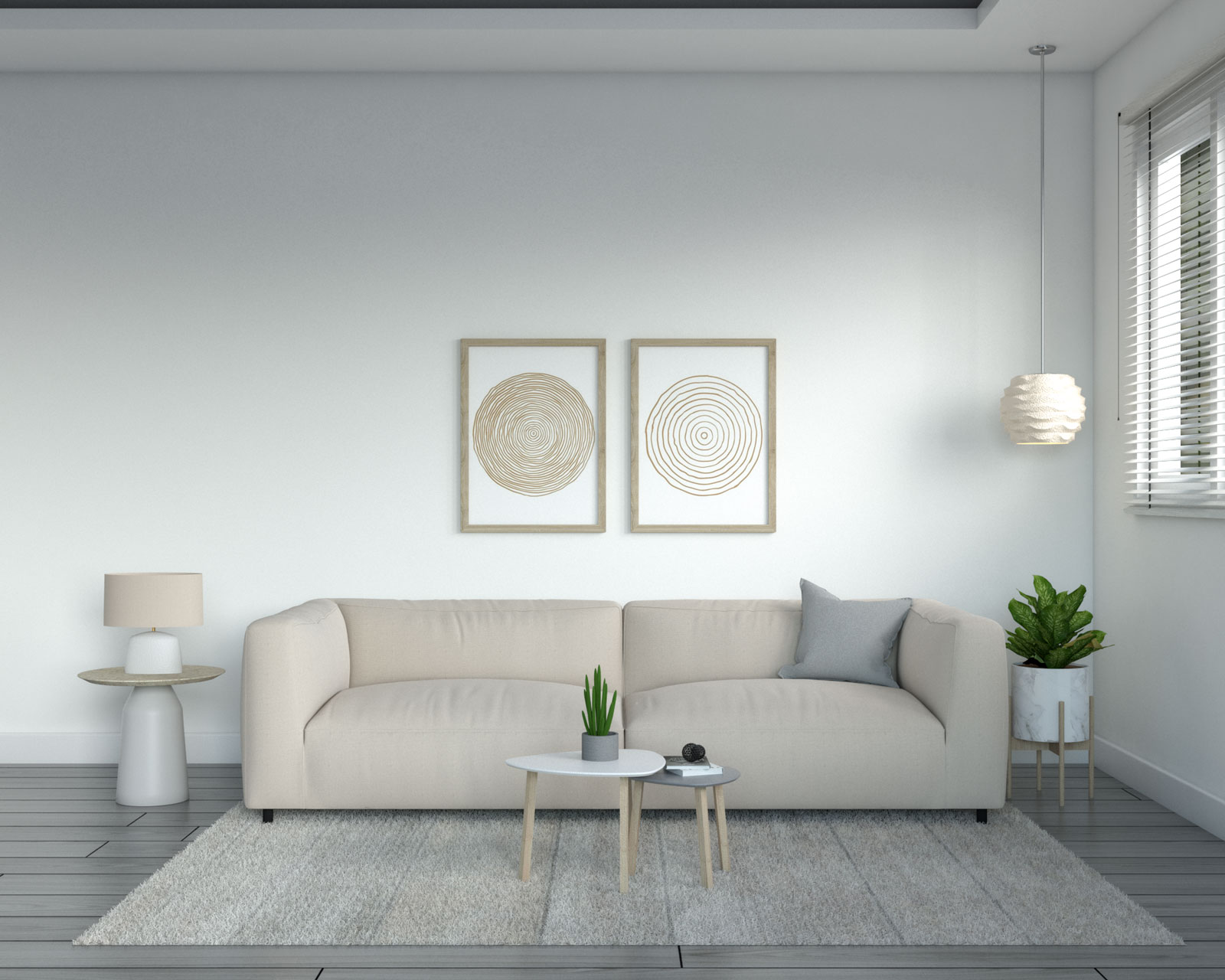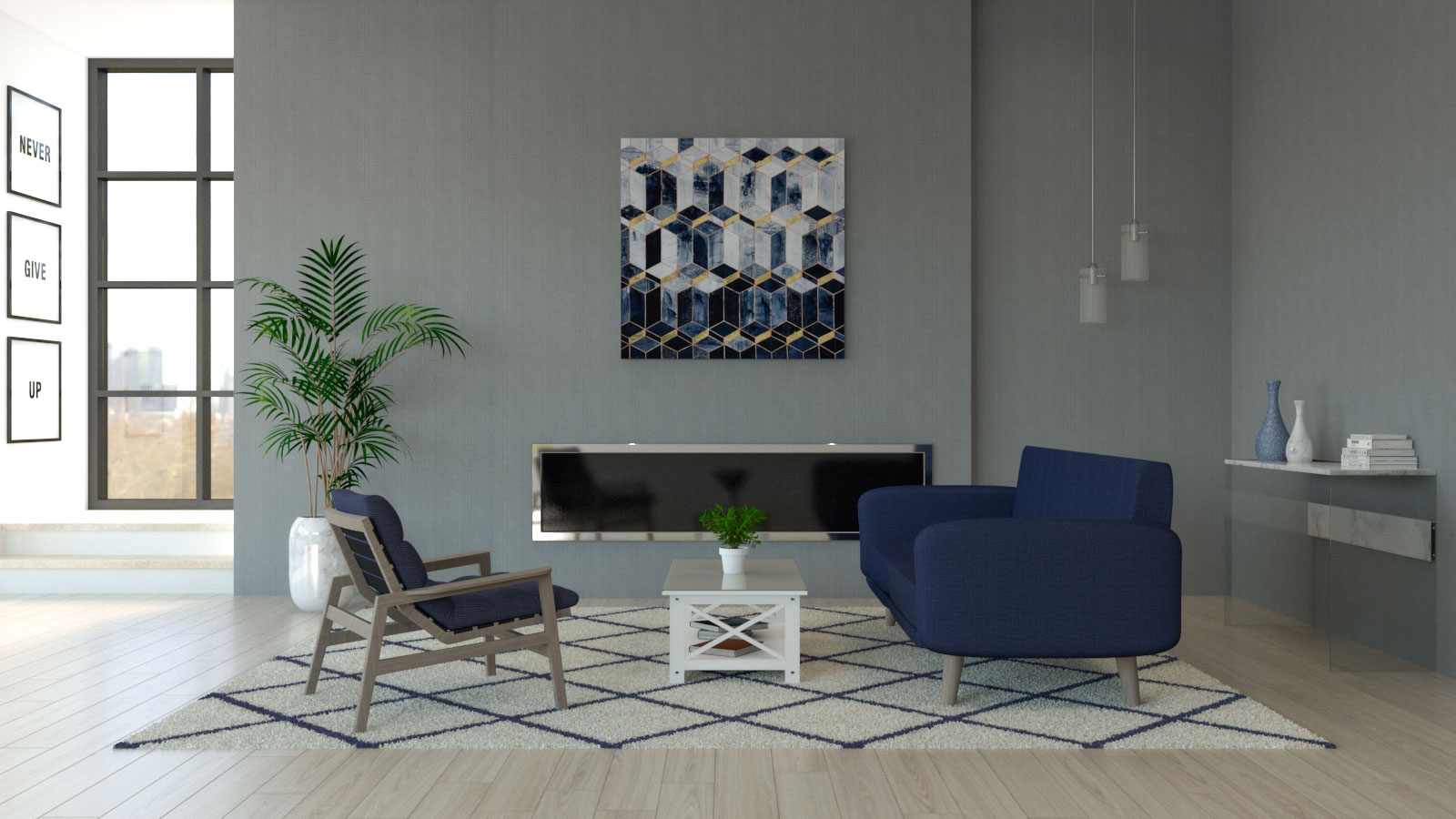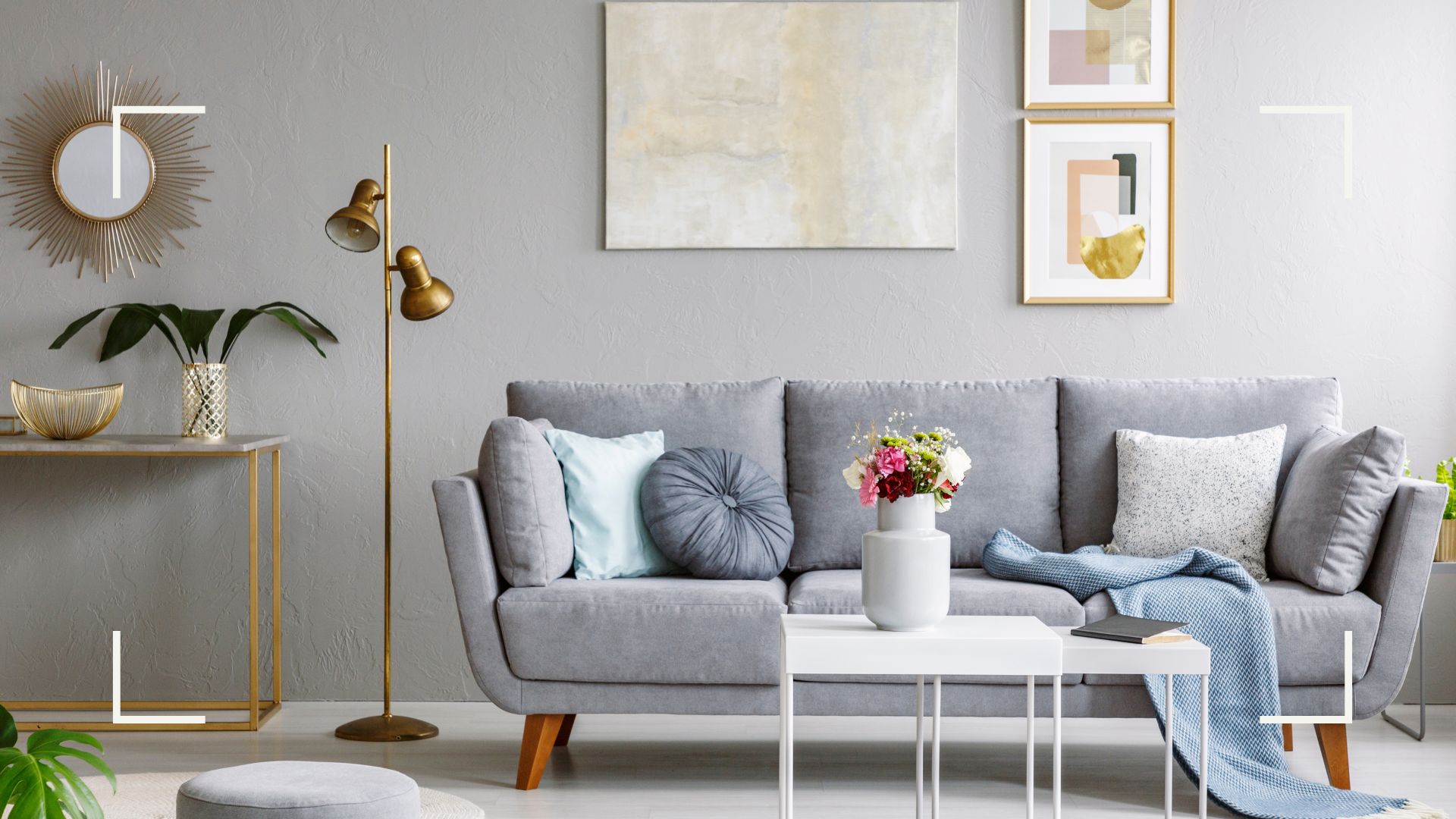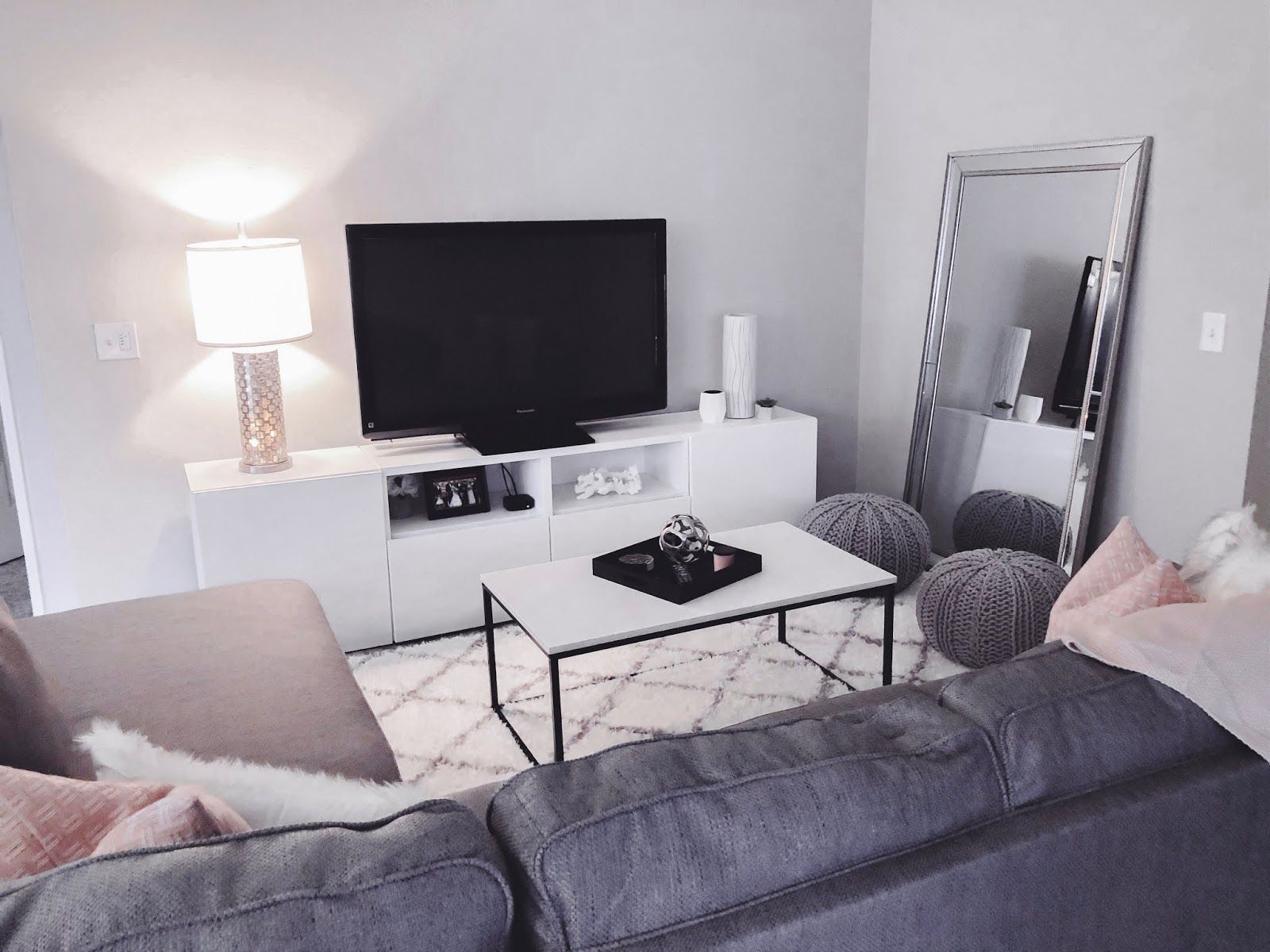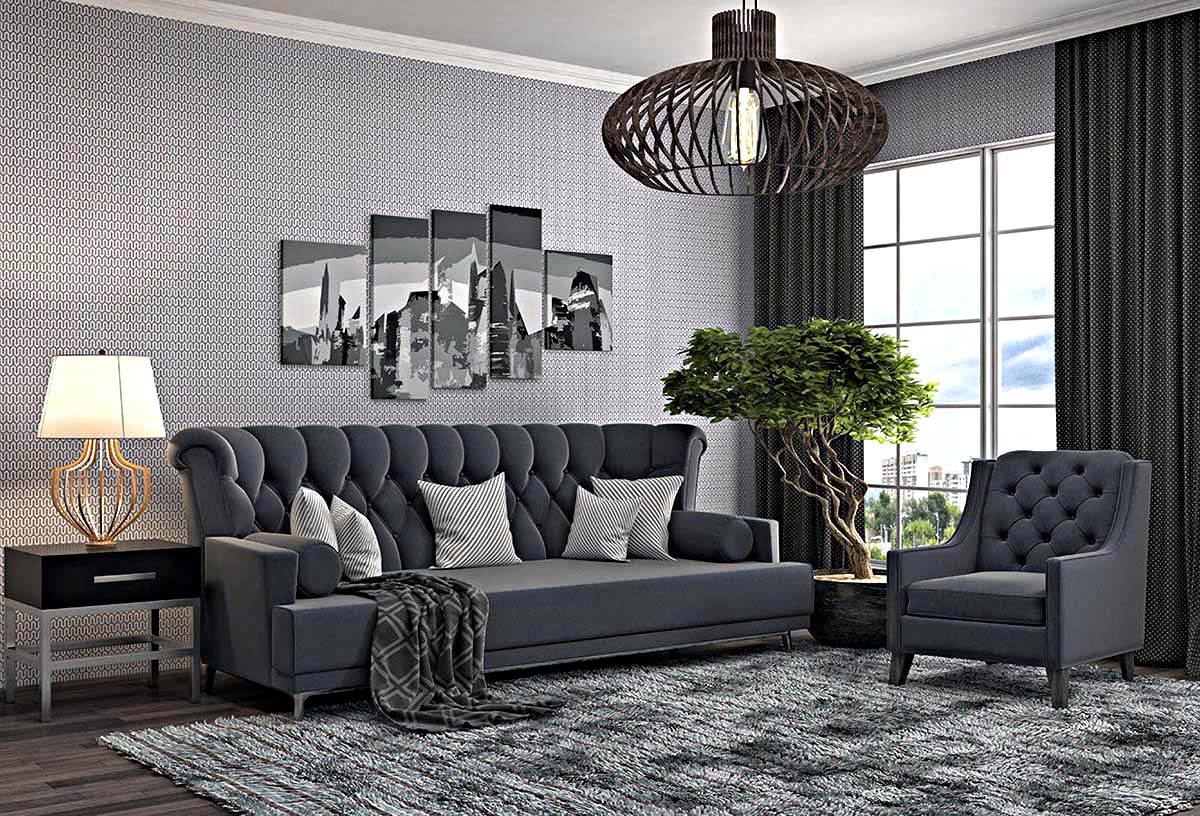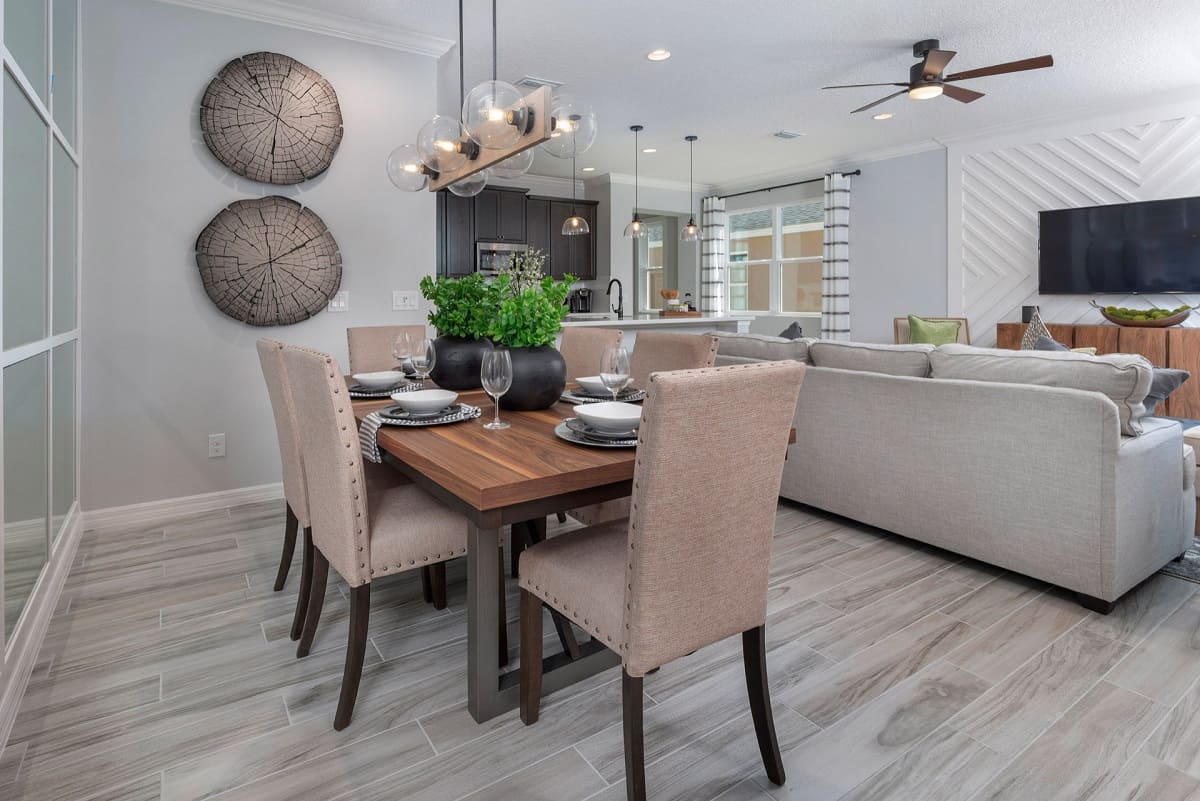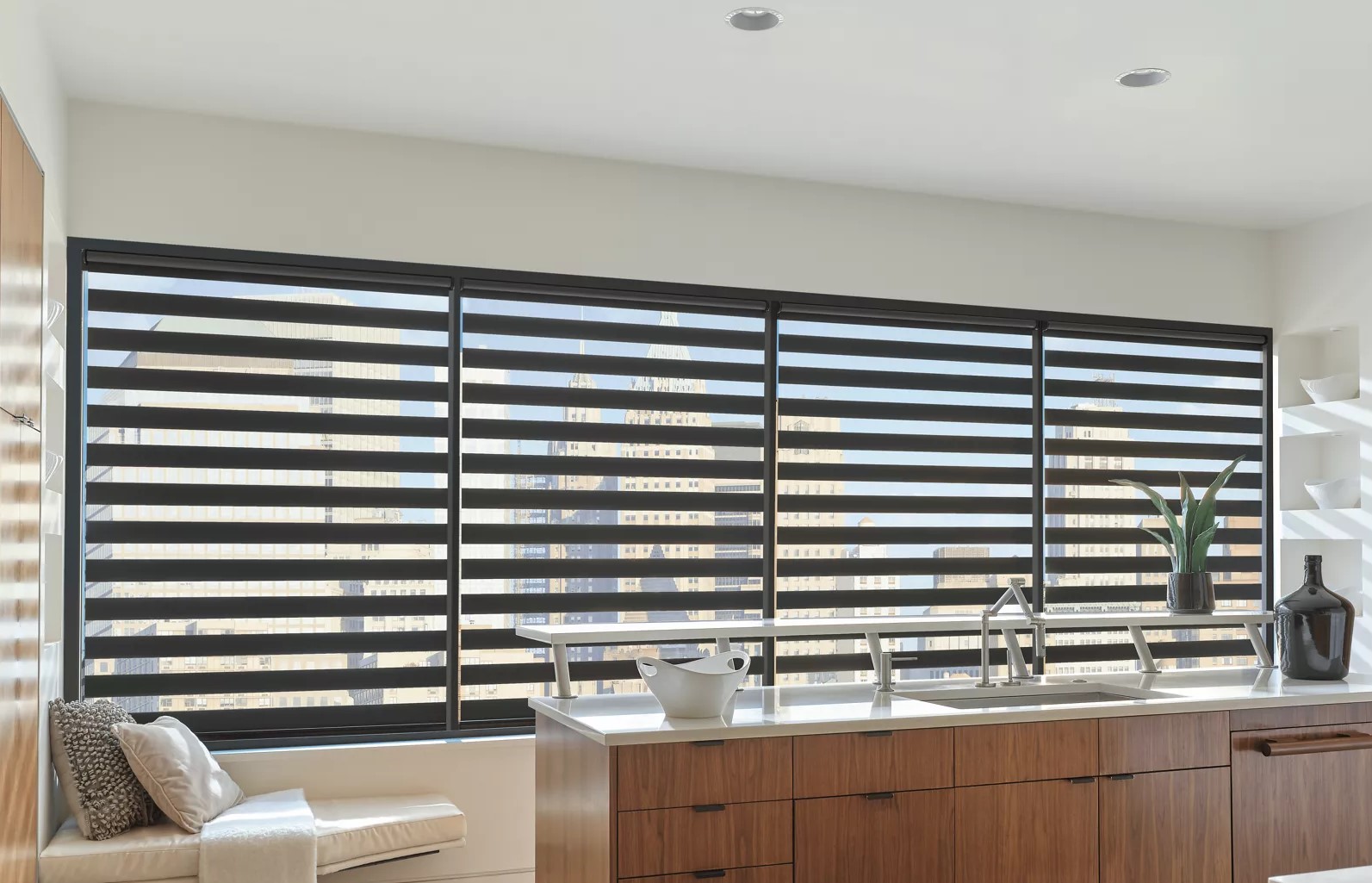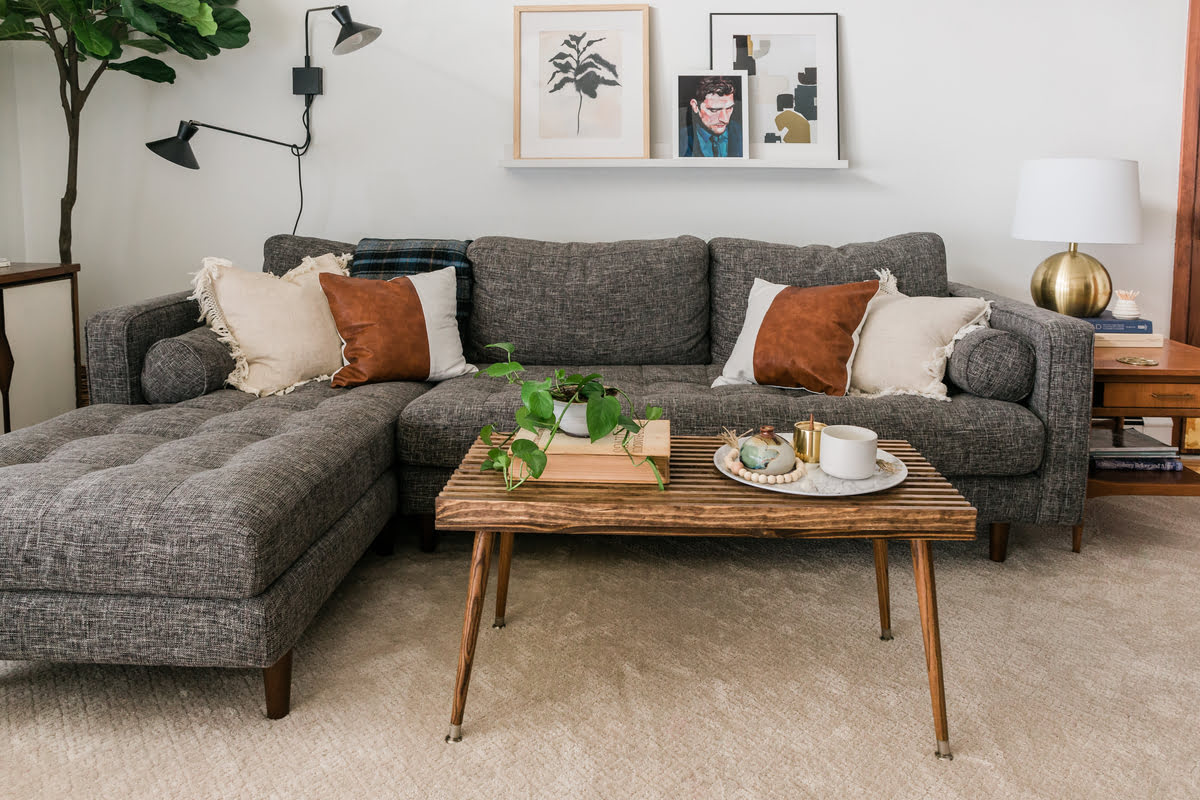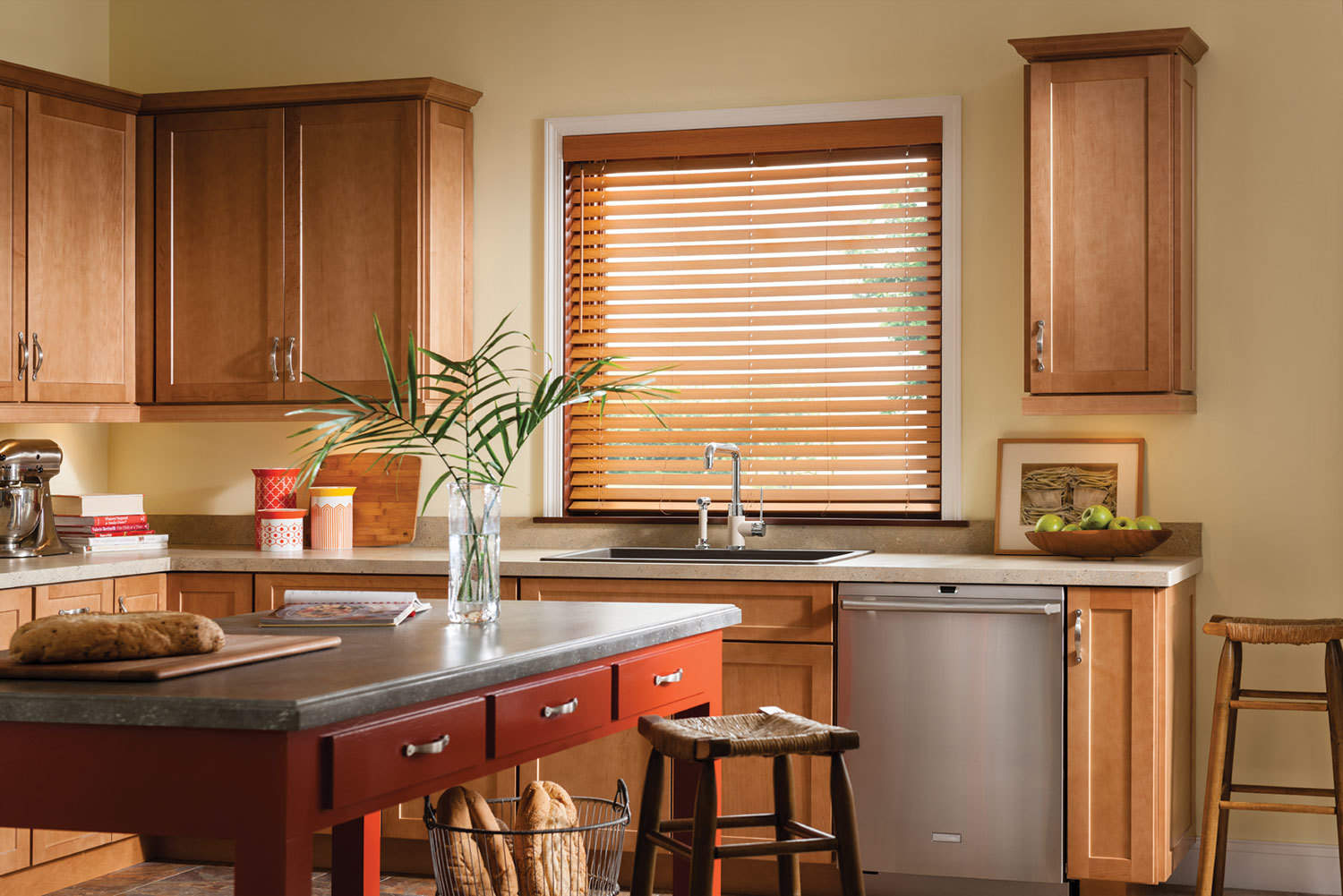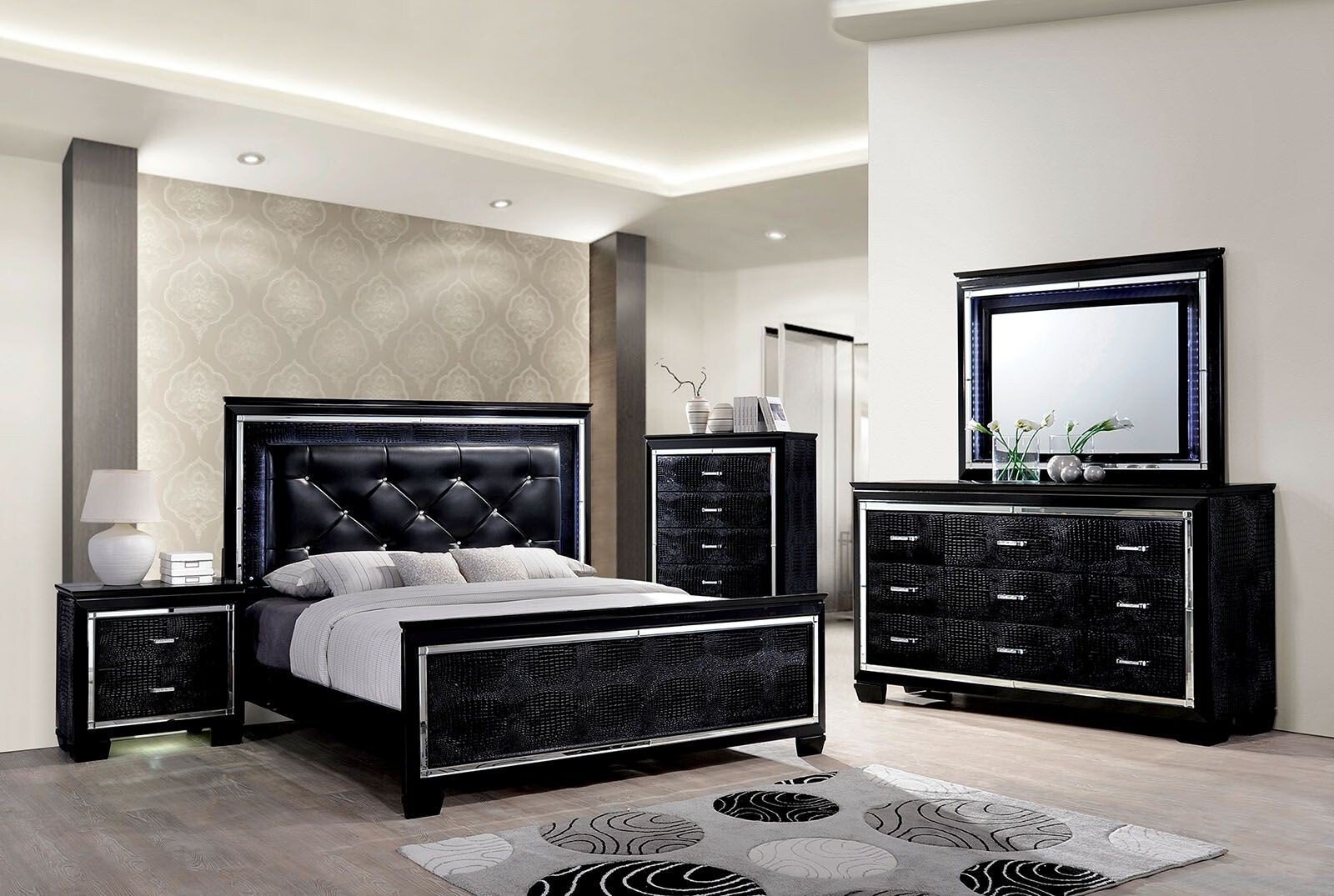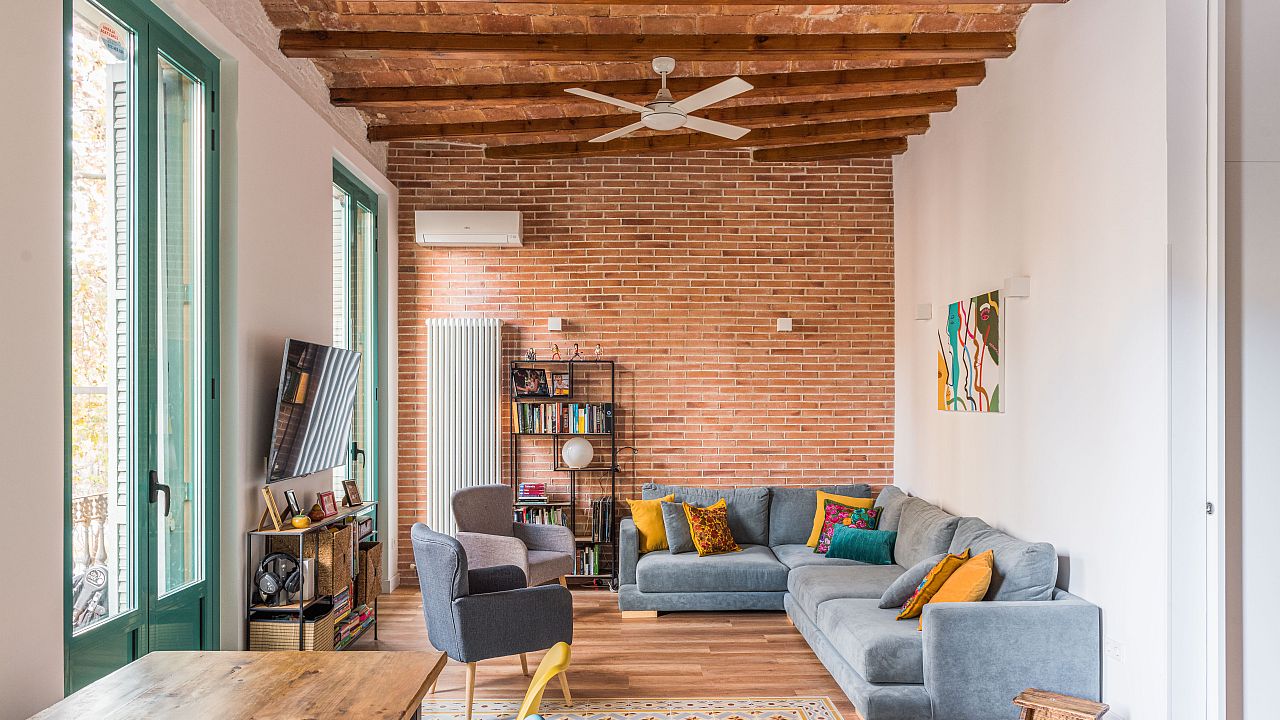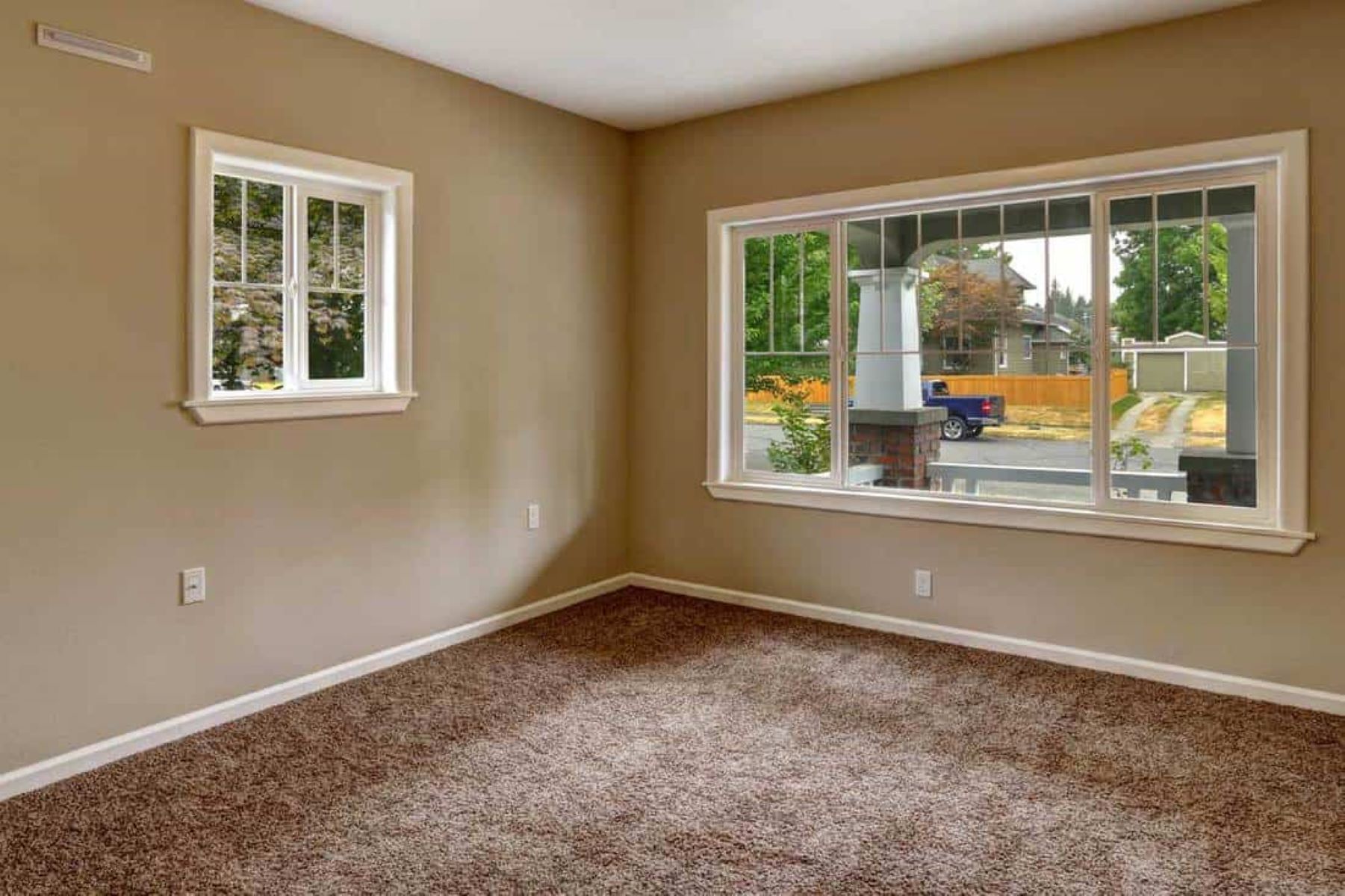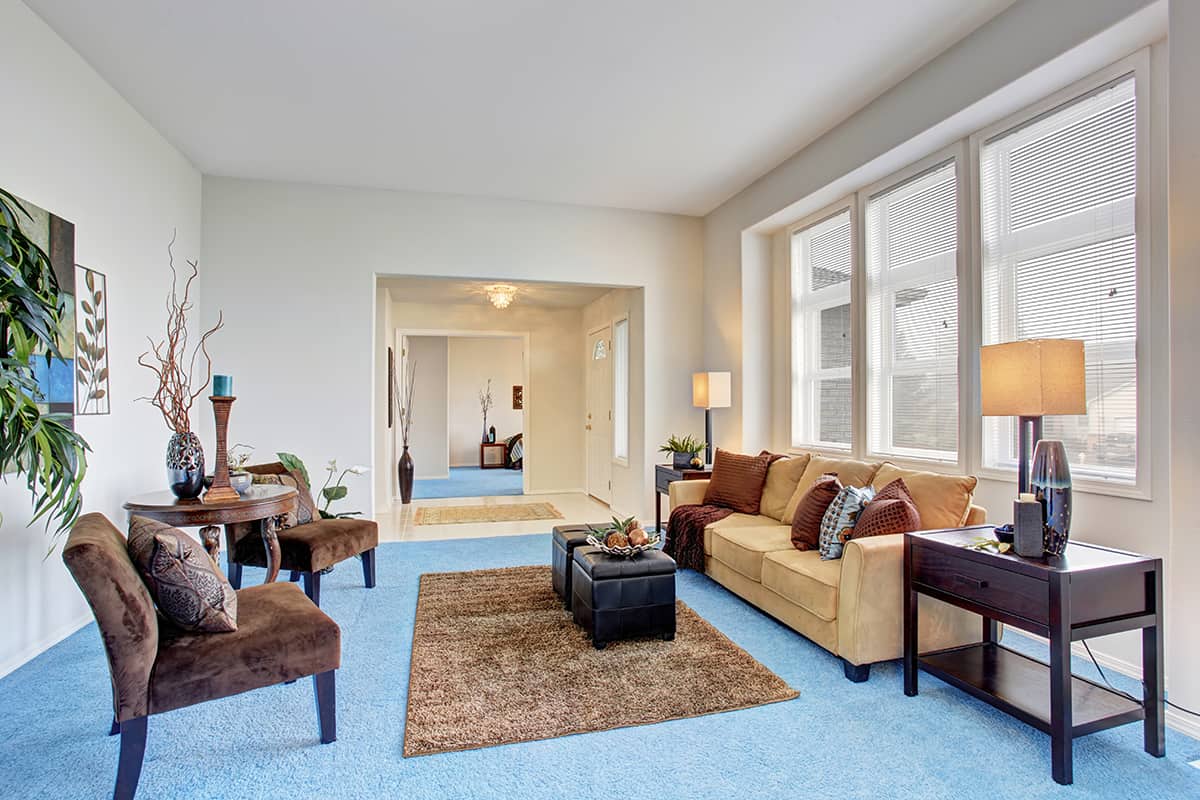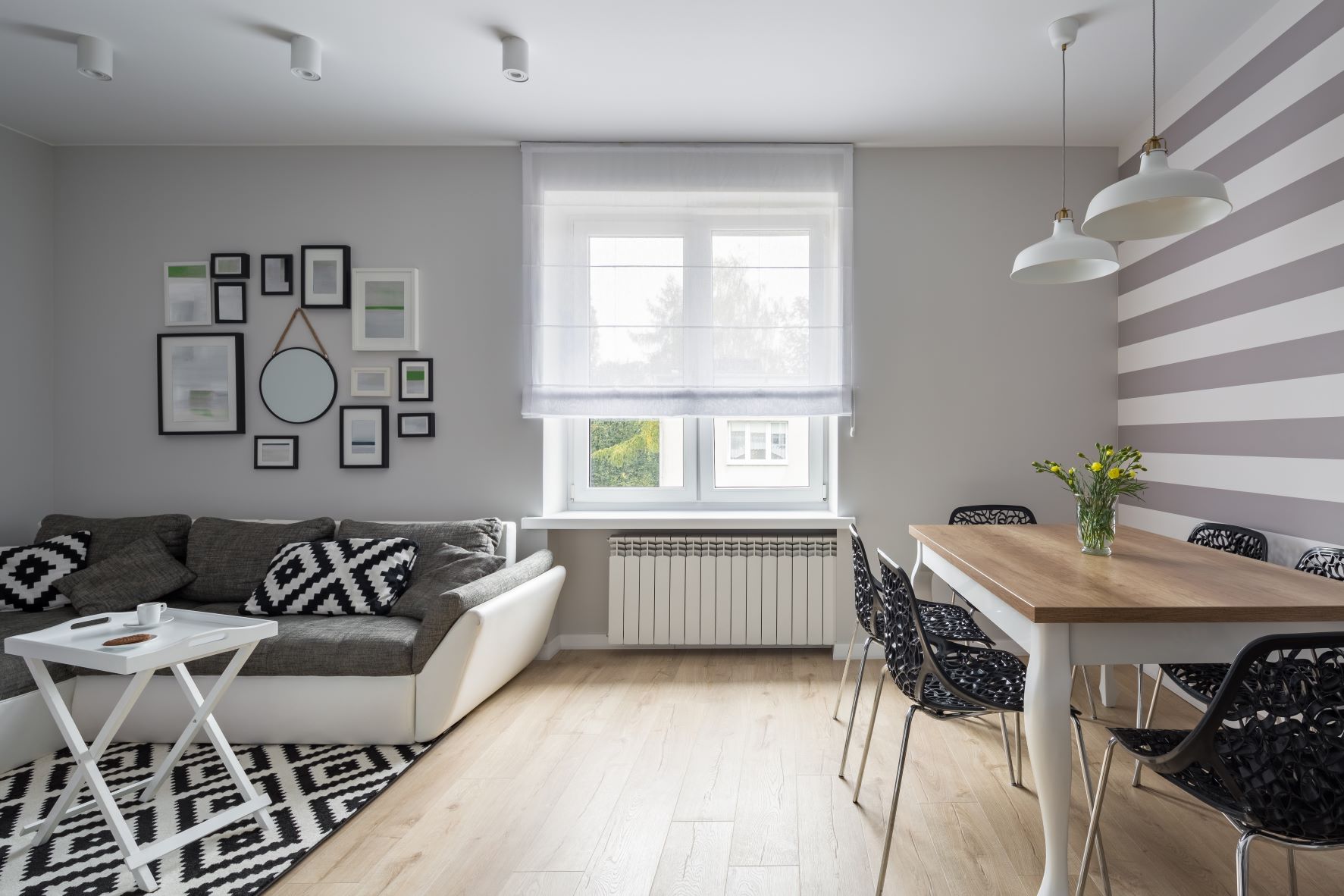

Articles
What Color Blinds Goes With Grey Walls
Modified: May 6, 2024
Looking for articles on what color blinds goes with grey walls? Find the perfect match for your home decor and enhance your living space with our expert recommendations.
(Many of the links in this article redirect to a specific reviewed product. Your purchase of these products through affiliate links helps to generate commission for Storables.com, at no extra cost. Learn more)
Introduction
Choosing the right color blinds to complement your grey walls is an important decision in creating a cohesive and stylish interior design. Grey walls have become increasingly popular in modern home decor for their versatility and ability to create a calming and sophisticated atmosphere. However, finding the perfect color blinds to match with grey walls can be a bit challenging.
In this article, we will explore various options and considerations when selecting blinds to go with grey walls. Whether you want to create a neutral, contrasting, or harmonious look, we will provide you with practical suggestions and tips to make your decision easier.
Understanding the undertones and shades of grey in your wall paint is essential. Grey can have warm or cool undertones, such as blue, green, or purple. It can also range from light greys to dark charcoal hues. By understanding these characteristics, you can choose blinds that enhance and complement the overall aesthetic of your space.
So, let’s delve into the world of color blinds and grey walls and discover the perfect combination to bring your interior design vision to life.
Key Takeaways:
- Embrace the versatility of grey walls by choosing neutral, contrasting, or harmonious color blinds to create a cohesive and stylish interior design that reflects your personal style and enhances the ambiance of your space.
- Elevate the beauty of your grey walls with the perfect color blinds, whether you prefer a timeless and understated look, a bold and contrasting statement, a harmonious and balanced feel, or the addition of patterns and textures.
Read more: What Color Of Walls Goes With Grey Carpet
Understanding Grey Walls
Grey walls are a popular choice in interior design due to their versatility and ability to create a modern and sophisticated look. Grey is considered a neutral color, which means it pairs well with a wide range of other colors. Understanding the different shades and undertones of grey is crucial in selecting the right blinds to complement your walls.
When it comes to grey walls, there are various undertones to consider. Some greys have cool undertones, which can include hints of blue, green, or purple. These cooler greys create a fresh and calming atmosphere, making them perfect for rooms where you want a serene and tranquil ambiance.
On the other hand, warm undertones in grey walls can include touches of yellow, brown, or even red. These warmer greys can add depth and richness to a space, creating a cozy and welcoming feel. They work well in areas where you want to create a more intimate and inviting atmosphere.
Additionally, the shade of grey also plays a role in determining the overall feel of the room. Lighter greys tend to create an airy and spacious look, making them ideal for smaller rooms or spaces that lack natural light. Darker greys, such as charcoal or slate, can add drama and sophistication to a room, making them suitable for areas where you want a more luxurious and formal ambiance.
By understanding the undertones and shades of your grey walls, you can choose blinds that either complement or contrast with your walls to create the desired effect.
Now, let’s move on to the next step in choosing the right color blinds for your grey walls.
Choosing the Right Color Blinds
When it comes to selecting blinds to go with your grey walls, there are several factors to consider, including the overall look and feel you want to achieve, the level of contrast you desire, and the existing color scheme in your space. Here are some tips to help you choose the right color blinds:
Neutral Shades:
One option for complementing grey walls is to select blinds in neutral shades. Neutral colors like white, cream, or beige can create a clean and classic look that blends seamlessly with the grey backdrop. These colors help maintain a serene and understated atmosphere while allowing other elements in the room, such as furniture or artwork, to take center stage.
Contrasting Colors:
If you want to add visual interest and create a bolder statement, consider choosing blinds in contrasting colors to your grey walls. For cool-toned grey walls, warmer colors like rich browns, deep blues, or earthy greens can create a striking contrast. Conversely, for warm-toned grey walls, cooler tones like light blues or pale grays can offer an eye-catching juxtaposition. This contrasting approach can add depth and personality to your space.
Complementary Colors:
Another approach is to select blinds in colors that are complementary to your grey walls. Complementary colors are those that are opposite each other on the color wheel, such as shades of blue or blue-green for warm-toned grey walls, or shades of orange or yellow for cool-toned grey walls. This color scheme creates a harmonious and balanced look, with the blinds enhancing the overall aesthetic of the room.
Harmonious Tones:
If you prefer a more monochromatic and harmonious look, choose blinds that are similar in tone to your grey walls. Opt for shades that are a few shades lighter or darker than your wall color. This approach creates a seamless and cohesive appearance, allowing the focus to be on the texture and material of the blinds rather than the color itself.
Remember to consider the other elements in the room, such as furniture, flooring, and accessories, when choosing the color of your blinds. Take into account the overall color scheme and ensure that the blinds complement these elements as well.
Now that you have a better understanding of the different options, let’s explore some practical suggestions for color blinds that go well with grey walls.
Neutral Shades
Opting for neutral shades when selecting blinds to go with your grey walls is a timeless and versatile choice. Neutral colors like white, cream, or beige can create a clean and classic look that seamlessly blends with the grey backdrop.
White blinds, in particular, can amplify the modern and minimalist aesthetic of grey walls. They create a fresh and airy atmosphere, making them an excellent choice for rooms with limited natural light or smaller spaces. White blinds also provide a clean and crisp contrast against darker shades of grey, adding a touch of brightness and helping to create a visually open and spacious feel.
Cream-colored blinds, on the other hand, offer a warmer and more cozy vibe when paired with grey walls. Cream is a versatile neutral color that complements both warm and cool-toned greys. It adds a touch of warmth and softness to the space, creating a comfortable and inviting atmosphere. Cream blinds also work well in rooms with a more traditional or rustic design scheme.
Beige blinds are another great option for creating a neutral and harmonious look. Beige, with its subtle warmth, adds depth to grey walls and creates an understated elegance. This combination creates a calming and sophisticated ambiance, making beige blinds a popular choice for bedrooms and living areas.
When choosing neutral shades for your blinds, consider the material and texture as well. Linen or woven blinds in neutral tones can add a touch of texture and visual interest to your space. They provide a soft and organic feel, creating a cozy and relaxed atmosphere.
Overall, neutral-colored blinds are a safe and timeless choice when complementing your grey walls. They offer flexibility and versatility, allowing you to easily change the decor and accessories in your space without worrying about the blinds clashing with the new color scheme. Whether you opt for white, cream, or beige, neutral shades provide a clean and classic backdrop that allows other elements in the room to shine.
Now that we’ve explored neutral shades, let’s move on to contrasting colors, where we’ll discover how to make a bold statement with your blinds and grey walls.
Contrasting Colors
If you want to make a bold statement and add visual interest to your space, choosing blinds in contrasting colors to your grey walls is a great option. Contrasting colors create a striking and dynamic look, drawing attention to both the walls and the blinds.
For cool-toned grey walls, consider selecting blinds in warmer hues such as rich browns, deep blues, or earthy greens. These warm colors create a beautiful contrast against the cool grey backdrop, adding depth and warmth to the room. Brown blinds, for example, can bring a sense of richness and coziness, providing a beautiful contrast against light or medium grey walls. Deep blue blinds can create a sophisticated and elegant look, while earthy green blinds add a touch of nature and tranquility to the space.
On the other hand, if you have warm-toned grey walls, choosing blinds in cooler tones can create a visually appealing contrast. Light blues or pale grays can offer a refreshing and striking juxtaposition against warm greys. Light blue blinds can create a cool and serene atmosphere, while pale gray blinds add a touch of modernity and sophistication to the room.
When opting for contrasting colors, you can also consider using blinds in bold or vibrant shades to create a focal point in the space. Bright colors such as mustard yellow, deep red, or even a pop of orange can add a lively and energetic element to the room, making it visually captivating and stimulating.
Remember to balance the intensity of the contrasting colors to ensure they complement each other and create a cohesive look. You can achieve this by incorporating accents or accessories in the room that tie in the colors of the blinds and the walls. This way, you create a harmonious balance that allows the contrasting colors to stand out without overwhelming the space.
Contrasting colors can bring a unique and eye-catching element to your interior design. They can elevate the overall aesthetic of the room and create a sense of drama and personality. Whether you choose warmer colors against cool-toned grey walls or cooler tones against warm-toned grey walls, contrasting blinds can be a bold and exciting addition to your space.
Now that we’ve explored contrasting colors, let’s move on to complementary colors, where we’ll discover how to create a harmonious look with your blinds and grey walls.
Read more: What Color Recliner Goes With Grey Couch
Complementary Colors
Creating a harmonious look with your blinds and grey walls can be achieved by selecting colors that are complementary to each other. Complementary colors are those that are opposite each other on the color wheel, creating a pleasing and balanced visual effect.
If your grey walls have warm undertones, such as hints of yellow, brown, or red, choosing blinds in cool tones can create a stunning contrast. Shades of blue or blue-green can beautifully complement the warm greys. Light blue blinds, for example, can create a calming and serene ambiance, while deeper shades of blue can add depth and sophistication to the space. Blue-green blinds, on the other hand, can bring a sense of freshness and vitality to the room.
Conversely, if your grey walls have cool undertones, such as subtle hints of blue, green, or purple, selecting blinds in warmer colors can create a striking visual impact. Shades of orange or yellow can beautifully enhance the cool greys. Orange blinds, for instance, can add warmth and vibrancy, creating a cozy and inviting atmosphere. Yellow blinds can bring a sense of sunshine and cheerfulness, making the space feel bright and lively.
When combining complementary colors, it’s important to strike a balance. Consider the intensity and saturation of both the grey walls and the blinds. You can opt for shades that are slightly lighter or darker than the wall color to create a cohesive and harmonious look. This way, the colors will work together to enhance the overall aesthetic of the room.
To further enhance the complementary color scheme, you can incorporate accessories and accents in the space that tie in the colors of the blinds and the walls. This can be done through artwork, throw pillows, rugs, or other decor elements. By doing so, you create a cohesive and unified look that brings the entire room together.
Choosing complementary colors for your blinds adds a sense of balance and harmony to your interior design. It creates a visually pleasing and unified look that elevates the overall aesthetic of the space. By considering the undertones of your grey walls and selecting the right complementary colors for your blinds, you can achieve a cohesive and beautiful outcome.
Now that we’ve explored complementary colors, let’s move on to harmonious tones, where we’ll discover how to create a seamless and cohesive look with your blinds and grey walls.
Harmonious Tones
Creating a harmonious look with your blinds and grey walls involves selecting colors that are similar in tone and intensity. By choosing blinds that are a few shades lighter or darker than your grey walls, you can create a seamless and cohesive aesthetic.
When opting for harmonious tones, consider selecting blinds that are in the same color family as your grey walls. For example, if you have light grey walls, you can choose blinds in a slightly lighter shade of grey to maintain a soft and subtle look. This creates a monochromatic effect, where the focus is on the texture and material of the blinds rather than the color itself. This approach can work well in minimalist or contemporary design styles.
If your grey walls have deeper and richer tones, choosing blinds in a darker shade of grey creates a sophisticated and cohesive look. This creates a sense of depth and adds a touch of drama to the space. Darker grey blinds can work particularly well in rooms where you want to create a more formal or luxurious ambiance.
Harmonious tones also extend to the material and texture of the blinds. Consider selecting blinds with a similar texture to the walls to create a cohesive and visually appealing look. For example, if your grey walls have a smooth and sleek finish, blinds with a smooth and silky texture can complement the overall aesthetic. If your walls have a textured or rough surface, blinds with a textured or woven material can create a harmonious balance.
When using harmonious tones, it’s important to create visual interest through layering and contrast. Incorporate different textures, patterns, or materials within the same color range to add depth and dimension to the space. For example, you can pair solid grey blinds with curtains or drapes in a similar tone but with a different texture, such as linen or velvet.
By opting for harmonious tones, you create a cohesive and unified look in your space. The similarity in color tones allows for a seamless transition between the walls and the blinds, creating a soothing and visually pleasing atmosphere.
Now that we’ve explored harmonious tones, let’s move on to adding patterns and textures, where we’ll discover how to bring a unique and vibrant element to your blinds and grey walls.
When choosing blinds for grey walls, consider white or off-white blinds for a clean and classic look, or go for a pop of color with navy or charcoal blinds for a more dramatic effect. Be sure to consider the overall style and feel of the room when making your decision.
Adding Patterns and Textures
Adding patterns and textures to your blinds can bring a unique and vibrant element to your space, creating visual interest and enhancing the overall design of your grey walls. Consider incorporating these elements to elevate the style and add personality to your interior.
Patterns can be an effective way to make a statement with your blinds. If your grey walls have a solid color, choosing blinds with bold patterns can introduce a dynamic and eye-catching element to the room. Opt for geometric patterns, floral designs, or even abstract motifs that complement the style of your space. Patterns can create a sense of movement and energy, transforming a plain wall into a focal point.
When selecting patterned blinds, it’s essential to consider the scale and proportion. Larger patterns work well in rooms with high ceilings or spacious areas, as they create a dramatic impact. Smaller patterns, on the other hand, are ideal for smaller spaces or rooms where you want a more subtle and delicate touch. Remember to balance the patterns with the size of the windows to avoid overwhelming the space.
In addition to patterns, incorporating different textures can add depth and tactile appeal to your blinds. Textured blinds can create a sense of warmth and coziness. Consider options like woven fabrics, natural fibers, or blinds with a textured weave. These textures can highlight the contrast between the smooth finish of the grey walls and the tactile quality of the blinds.
Textures can also be combined with patterns to create a visually captivating look. For example, blinds with a textured pattern, such as a raised stripe or a waffle weave, can bring a unique and dimensional element to your space. This combination adds layers of visual interest and makes your blinds a standout feature.
When adding patterns and textures to your blinds, it’s important to consider the overall design scheme of the room. Ensure that the patterns and textures complement the other elements, such as furniture, flooring, and accessories. Strive for a balanced and cohesive look, where the blinds become an integral part of the overall aesthetic.
By adding patterns and textures to your blinds, you can create a visually captivating and personalized space. Whether you opt for bold and vibrant patterns or subtle and textured fabrics, these elements will enhance the beauty and individuality of your grey walls.
Now that we’ve explored adding patterns and textures, let’s conclude our discussion on selecting blinds for grey walls.
Conclusion
Choosing the right color blinds to go with your grey walls is crucial in creating a cohesive and visually appealing interior design. Whether you prefer a neutral and understated look, a bold and contrasting statement, a harmonious and balanced feel, or the addition of patterns and textures, there are plenty of options to suit your style and preferences.
Understanding the undertones and shades of your grey walls is a key factor in selecting the most suitable blinds. Cool-toned greys can be enhanced with warm or contrasting colors, while warm-toned greys can be complemented with cooler or complementary shades. Harmonious tones can create a seamless and cohesive look, while patterns and textures can add depth and visual interest to your space.
Remember to consider the overall design scheme of the room when choosing blinds for your grey walls. Take into account other elements such as furniture, flooring, and accessories to ensure a harmonious and balanced composition. By doing so, you can create a space that reflects your personal style and enhances the ambiance you desire.
Whether you opt for neutral shades, contrasting colors, complementary hues, harmonious tones, or patterns and textures, it’s important to consider your preferences and the overall aesthetic you want to achieve. Experimentation and creativity are key in finding the perfect combination.
Ultimately, the right color blinds can enhance the beauty of your grey walls, creating an inviting and stylish atmosphere. So take the time to explore different options, consider your space and style, and select blinds that truly bring your interior design vision to life.
Now that you’re armed with knowledge and inspiration, go ahead and confidently choose the perfect color blinds for your grey walls!
Excited to spruce up your space with grey walls? Why stop there? Dive into our latest guide on wall paint trends for 2024. Discover fresh ideas that'll transform any room into a vibrant, stylish haven. Don't miss out on these creative insights!
Frequently Asked Questions about What Color Blinds Goes With Grey Walls
Was this page helpful?
At Storables.com, we guarantee accurate and reliable information. Our content, validated by Expert Board Contributors, is crafted following stringent Editorial Policies. We're committed to providing you with well-researched, expert-backed insights for all your informational needs.
